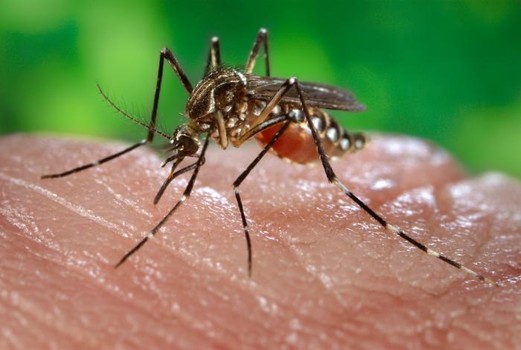The human race have long experienced the wrath of nature. The ancient Egyptians, Mesopotamians, Mayans and European populations among other primeval inhabitants during the four centuries of the Little Ice Age were all distressed by nature's climatic cycles. Disasters and disease outbreaks occurred repeatedly in response to the extremes of climatic cycles from drought to flooding to extreme cool climate.
Cool, wet summers led to outbreaks of an illness called St. Anthony's Fire in Central Europe. Malnutrition led to a weakened immunity to a variety of illness. Even in non-tropical areas where malaria was less likely to be expected, became one of the most dreaded illness and caused significant number of deaths in England.
In 1969, when the Apollo moon shot provided extraordinary images of the earth suspended in space, people's view on the biosphere and its limits were transformed. People gained more understanding on how both human and animal species depend on supplies of food and water, freedom from excess infectious disease, and the physical safety and comfort conferred by climatic stability, that the world’s climate system is fundamental to this life-support.
However today, massive outbreaks of climate-induced diseases continue to threaten the population. Humankind's activities are altering the world's climate. We are increasing the atmospheric concentration of energy-trapping gases, thereby amplifying the natural "greenhouse effect" that makes the Earth habitable.
In its Fourth Assessment Report in 2007, the UN's Intergovernmental Panel on Climate Change (IPCC) said that there is a new and stronger evidence that most of the global warming observed over the last decade is attributable to human activities. Furthermore, IPCC states that Eleven of the last twelve years (1995-2006) rank among the twelve warmest years in the instrumental record of global surface temperature (since 1850). The temperature increase is widespread over the globe and is greater at higher northern latitudes. . Observations since 1961 show that the average temperature of the global ocean has increased to depths of at least 3000m and that the ocean has been taking up over 80% of the heat being added to the climate system. New analyses of balloonborne and satellite measurements of lower- and mid-tropospheric temperature show warming rates similar to those observed in surface temperature.
At continental, regional and ocean basin scales, numerous long-term changes in other aspects of climate have also been observed. Trends from 1900 to 2005 have been observed in precipitation amount in many large regions. Some extreme weather events have changed in frequency and/ or intensity over the last 50 years.
|
|
|
Photo Credits: www.globalpovertyproject.com
|
Now, we are experiencing once more the environmental consequences of climate change, such as extreme heat waves, rising sea-levels, changes in precipitation resulting in flooding and droughts, intense hurricanes, and degraded air quality which affect directly and indirectly the physical, social, and psychological health of humans.
The health status of millions of people is projected to be affected through, for example, increases in malnutrition; increased deaths, diseases and injury due to extreme weather events; increased burden of diarrheal diseases; increased frequency of cardio-respiratory diseases due to higher concentrations of ground-level ozone in urban areas related to climate change; and the altered spatial distribution of some infectious diseases.
Societies can respond to climate change by adapting to its impacts and by reducing GHG emissions (mitigation), thereby reducing the rate and magnitude of change. Health effects can be minimized or avoided with sound mitigation and adaptation strategies.
According to UN's IPCC, there is high confidence that neither adaptation nor mitigation alone can avoid all climate change impacts. Adaptation is necessary both in the short term and longer term to address impacts resulting from the warming that would occureven for the lowest stabilization scenarios assessed. There are barriers, limits and costs that are not fully understood. Adaptation and mitigation can complement each other andtogether can significantly reduce the risks of climate change.
Information source: http://www.ipcc.ch/pdf/assessment-report/ar4/syr/ar4_syr.pdf
Originally posted at http://www.caragahealthresearch.org/2013/08/climate-change-and-human-health-glimpse.html
Date Sunday, September 1, 2013


 Banana stalk may be the next alternative herbal remedy against kidney stones according to a study done on mice by Pharmacy students at the San Pedro College in Davao City.
Banana stalk may be the next alternative herbal remedy against kidney stones according to a study done on mice by Pharmacy students at the San Pedro College in Davao City. Malunggay
Malunggay